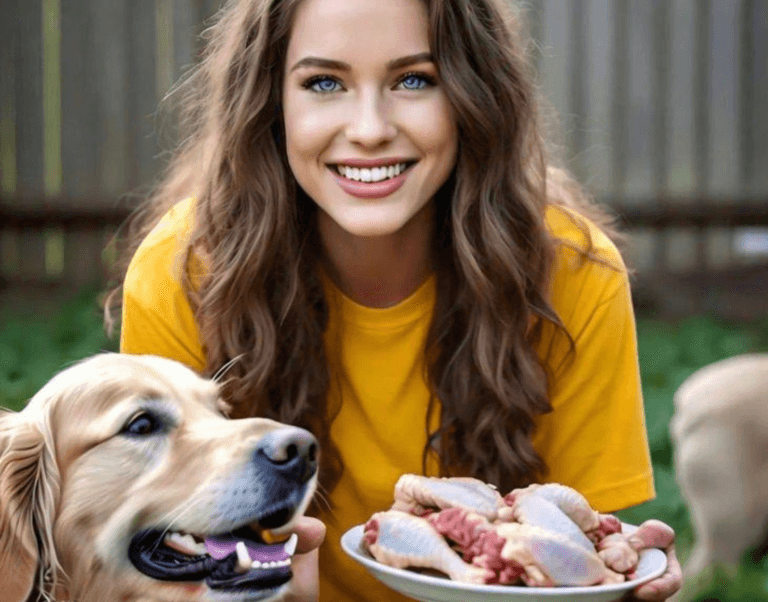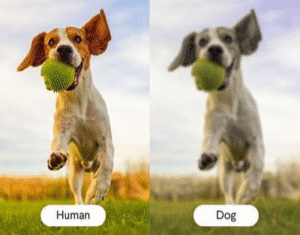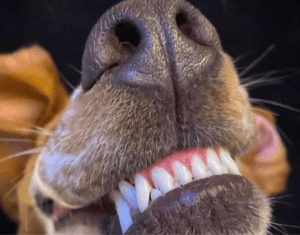Today, we’re diving into one of those questions that seems to pop up in every dog owner group chat at least once a month. It usually starts when someone’s furry troublemaker swipes a piece of uncooked chicken from the counter while you’re meal prepping (I’m looking at you, Max), and suddenly you’re frantically Googling “dog ate raw chicken help now please!!!” at 7:30 PM on a Tuesday.
Índice
Been there, done that, called the emergency vet in a panic!
So let’s settle this once and for all: Can your canine companion safely chow down on raw chicken? The answer isn’t as straightforward as a simple “woof” or “grr,” and as your fellow pet parent who’s been through the trenches of dog ownership, I’m here to give you the whole messy truth.
The Raw Truth: It’s Complicated
First things first—this is coming from one very dedicated padre de perro who’s spent way too many hours deep-diving into research, chatting with professionals, and cleaning up after Max’s kitchen misadventures.
So, what’s the deal with raw chicken? The short answer? Raw chicken poses several potential risks to dogs, but some pet parents still choose to feed it as part of specific diets. Let’s break down the good, the bad, and the downright scary before you decide to let your pup go raw.
The “Oh No!” Risks of Raw Chicken
Bacteria Bonanza
Remember when your mom told you never to eat raw chicken because of salmonella? Well, turns out Mom’s wisdom applies to our furry friends too. Raw chicken can harbor nasty bacteria including:
- Salmonella
- Campylobacter
- E. coli
- Listeria
“But Riley,” you might be thinking, “wolves eat raw meat in the wild all the time!” True, but your precious pooch isn’t exactly hunting in the Alaskan wilderness. Max is more likely to be found stealing socks and begging for treats than taking down prey.
While dogs do have more acidic stomachs than humans, which helps them handle some bacteria better than we can, they’re not immune. Just last year, Max got into some questionable chicken I’d left thawing (rookie mistake, I turned my back for TWO SECONDS), and let me tell you, the aftermath was not pretty for either of us. Three days of doggy diarrhea and middle-of-the-night backyard trips later, we both learned our lesson.
The Bone Zone
Raw chicken bones are a whole other can of worms. Unlike cooked chicken bones which are ABSOLUTELY a no-go as they can splinter, raw bones are softer and more flexible. Some raw feeders include them for dental health and calcium.
BUT, and this is a big but, they still pose risks:
- Choking hazards
- Potential intestinal blockages
- Broken teeth
- Mouth or internal injuries
I still remember the time my neighbor’s Lab swallowed a chicken wing whole. The $2,800 emergency surgery certainly made those “budget-friendly” raw chicken wings the most expensive dog meal of all time. Want a safer chew option? These vet-approved dog chews are a great alternative, shop on Amazon
Cross-Contamination Chaos
Even if your dog has a stomach of steel, handling raw chicken creates cross-contamination risks for the humans in your household. Picture this: Your dog eats raw chicken, then licks your face, your couch, your toddler’s toys… Suddenly your entire home is a bacterial playground.
Trust me, trying to disinfect everything your dog’s mouth touches is like trying to keep your black pants free of pet hair, theoretically possible but practically impossible.
But Wait… What About Raw Diets?
Now, this is where the plot thickens. Some pet parents swear by raw food diets, including raw chicken. They claim benefits like:
- Shinier coats
- Healthier teeth
- Increased energy
- Smaller, less smelly poops (the dream!)
- Fewer allergies
The raw feeding community isn’t small, and many are passionate about their choice. My friend Sarah switched her Border Collie to a raw diet three years ago and insists her dog’s skin issues are completely resolved. Is it scientific proof? Nope. But it’s hard to argue with her dog’s glossy coat and boundless energy.
The Professional Perspective
Veterinary opinions on raw chicken and raw diets in general vary widely. Many conventional vets advise against it due to the risks outlined above. Meanwhile, some holistic vets support properly prepared raw diets.
The American Veterinary Medical Association (AVMA) officially discourages raw pet diets, citing health risks not just to pets but to their humans too. On the flip side, proponents argue that commercial pet food has its own set of problems.
When I asked my vet about raw feeding, she gave me what I think is the most balanced take: “If you’re determined to feed raw, learn how to do it safely, source your ingredients wisely, and be aware of the risks. For most pet owners, however, high-quality commercial foods are a safer bet.”
If You’re Still Considering Raw Chicken…
For those brave souls still interested in feeding raw chicken, here are some safety guidelines that might reduce (though not eliminate) the risks:
1. Don’t Wing It (Sorry, Couldn’t Resist)
Raw feeding requires research and planning. You can’t just toss your dog a chicken breast and call it dinner. Proper raw diet balance:
- Muscle meat
- Organ meat
- Bones
- Verduras
- Supplements
Chicken alone doesn’t provide complete nutrition, so please don’t just go rogue at the meat counter.
2. Source Matters—A LOT
If you’re going raw, human-grade meat from reliable sources is non-negotiable. That markdown chicken that’s been sitting in the grocery store case for days? Hard pass.
3. Handle With Care
Channel your inner food safety expert:
- Clean surfaces thoroughly
- Use separate cutting boards
- Wash your hands obsessively
- Store meat properly
- Don’t let raw meat sit out
My kitchen looks like a hazmat scene when I’m preparing Max’s special cumpleaños treat (yes, I’m that pet parent).
4. Consider Compromise
Some pet parents opt for a middle ground: commercially prepared raw diets that undergo high-pressure processing to kill pathogens while maintaining raw benefits. These cost more than DIY but offer convenience and potentially reduced risk. Explore safe, commercially prepared raw diets when you visit Masticable
5. Start Slow & Watch Closely
If introducing any new food, start with small amounts and monitor your dog closely for digestive upset or allergic reactions. Max once got hives from a new treat, and let me tell you—seeing your beloved pet suddenly covered in bumps is terrifying.
Safer Alternatives to Consider
If raw chicken seems like more risk than you’re willing to take (totally reasonable!), there are alternatives that might offer similar benefits:
1. Cooked Chicken
Plain, boneless chicken that’s fully cooked and cooled makes a fantastic protein boost for dogs. My Max does his signature “dinner dance” whenever chicken is on the menu.
2. Commercial Raw Alternatives
Many pet food companies now offer “raw inspired” options—freeze-dried or gently cooked products designed to mimic raw benefits without the bacterial concerns.
3. Home-Cooked Diets
If you’re interested in home preparation but concerned about raw, consider cooking for your pet under veterinary guidance. Just remember that home-cooked diets need proper supplementation to be complete.
4. High-Quality Kibble Plus Toppers
Even if you stick with kibble, adding fresh foods as toppers can boost nutrition and excitement. Whiskers may rule the house, but Max’s enthusiasm for mealtime makes him a temporary king.
The Bottom Line: What’s Right For YOUR Dog?
After diving deep into research, talking with my vet, and surviving Max’s Great Raw Chicken Incident of 2023, here’s my take as a fellow pet parent:
Raw chicken and raw feeding in general isn’t inherently wrong, but it comes with significant risks that require education, vigilance, and a full acceptance of potential consequences. For many dogs and their humans, the risks outweigh the potential benefits.
Whatever you decide, please make it an informed choice:
- Talk to your vet about your specific dog’s needs
- Consider your household (young kids, elderly, or immunocompromised family members? Maybe reconsider raw)
- Assess your own comfort with food safety protocols
- Think about your lifestyle and schedule
Remember: Being a responsible pet parent doesn’t mean following the latest trend or doing what works for other dogs. It means making the best possible decisions for YOUR furry family member based on sound information.
Max may think he wants whatever falls from my cutting board, but as his human, it’s my job to know better (even when he gives me those irresistible puppy eyes).!
Has your dog ever snagged something they shouldn’t have? Share your kitchen counter catastrophe stories in the comments! We pet parents need to stick together—because pet parenting is messy, chaotic, and absolutely worth it.





